Google Hangouts was one of Google’s best chat apps. It boasted a bunch of useful and, for its time, innovative features that still exist in other apps today. Here’s a fun fact: when Android Authority was a younger and smaller company, we actually did the bulk of our communications in a Google Hangouts group chat for a period of time. Tens of millions of people used it all around the world and many of us refused to leave until Google forced us away. Despite a small, but very loyal fanbase, Google has shuttled Hangouts across the rainbow bridge.
Here’s everything you need to know about the rise and fall of Google Hangouts.
Google Hangouts: A brief history
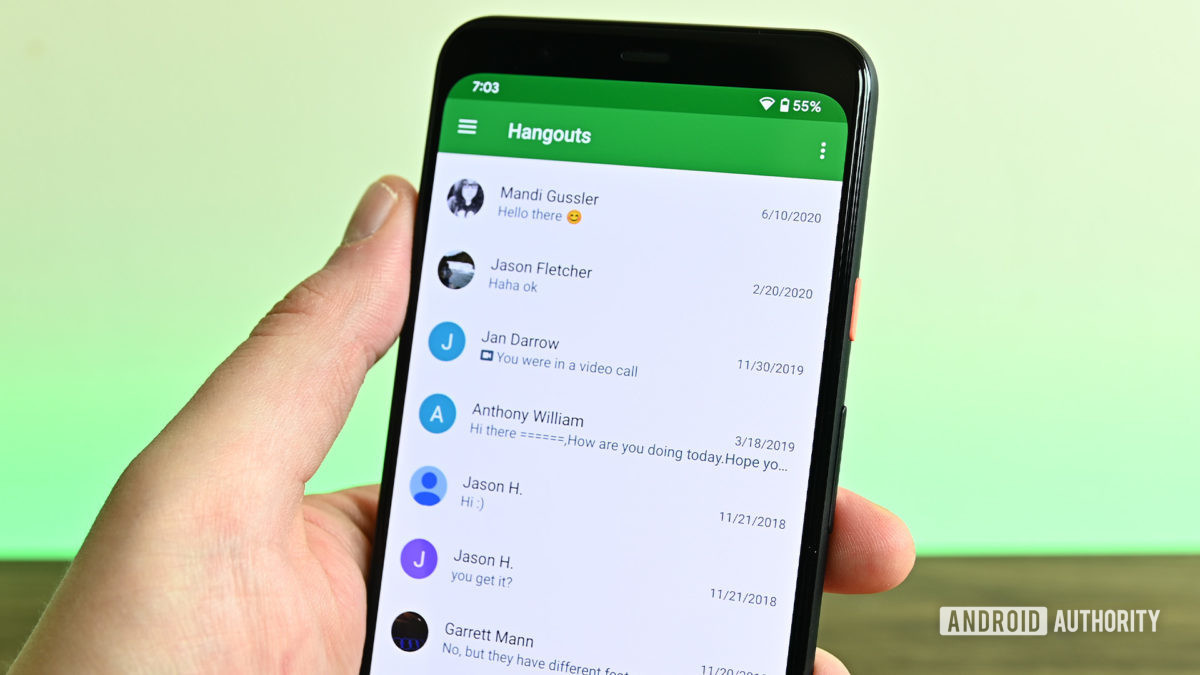
Let’s start with a brief history of Google Hangouts. It starts with a solid product launch with plenty of features over the course of a few years. It then degenerates into a random, rambling tale of a company that had no idea what it had or how to use it. Enjoy.
The early years: 2011-2013
Hangouts started life as part of the Google Plus experience. People could chat with each other while using the app, video chat with each other, and the Hangouts-On-Air service let you broadcast your video chats to other people. Back then, the only part of the site that was referred to as Hangouts was the video chat and broadcast service. The messaging part of the service was referred to as Huddles.
The service existed in various forms through 2011 and 2012. It received a bunch of refinement, including various UI changes and consolidation to make things easier on users. However, it remained tethered to Google Plus as part of the social media experience. It made headlines often for stuff like letting random people talk to astronauts in space. The sensational headlines and smooth functionality felt years ahead of its time. In a sense, it was, and it added to the excitement of the platform.
That all changed in 2013 during Google I/O when Hangouts was spun off into its own app. It had chat and video chat capabilities. Hangouts was supposed to have SMS as well, but it came in an update later in 2013. It also came with native cross-platform support for both video, voice, and text chat, a rarity at the time. Hangouts-On-Air remained attached to Google Plus.
The golden years: 2014-2015
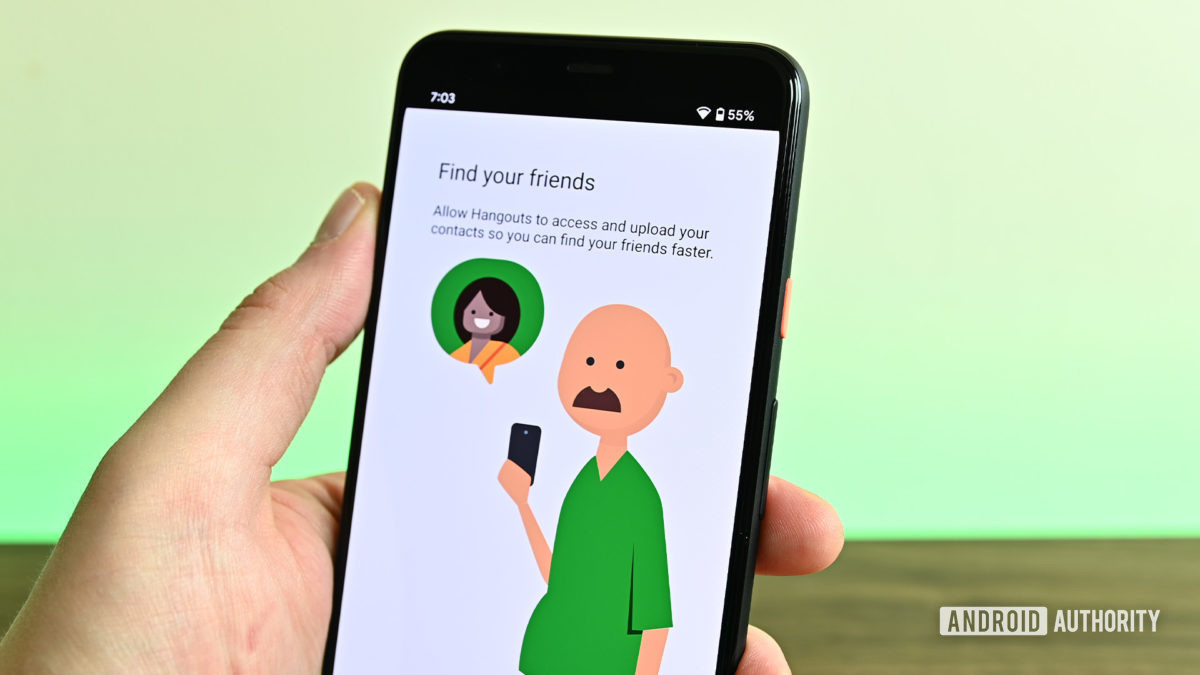
The middle years are when Hangouts truly shone. It came into the middle years with a solid voice, text, and video chat service along with SMS and MMS support. It started this era of Hangouts by merging SMS and Hangouts chats together for a cleaner, easier feel. Multiple updates in 2014 squashed bugs, slowly added features, revamped the UI, and even added the ability to call physical phone numbers. The desktop version of Hangouts got chat heads a year after Facebook popularized the feature. You get the idea. 2014 was a period of massive growth for Hangouts.
In 2015, Google officially retired Google Talk (the company finished this process in 2017), putting all of its eggs into Hangouts. This also began the experimental phase for Google Hangouts. Google experimented with letting you chat with businesses through Google Search. There was also integration with Google Now (later Google Assistant) introduced in mid-2015. Google even let you do presentations in Hangouts. Behind the curtains, the app went from version 2.4 to 5.0, which included a bunch of bug fixes, performance improvements, and UI adjustments. The app even passed one billion downloads during this time. Things seemed to be going quite well and users were, generally, happy.
The troubling years: 2015-2016
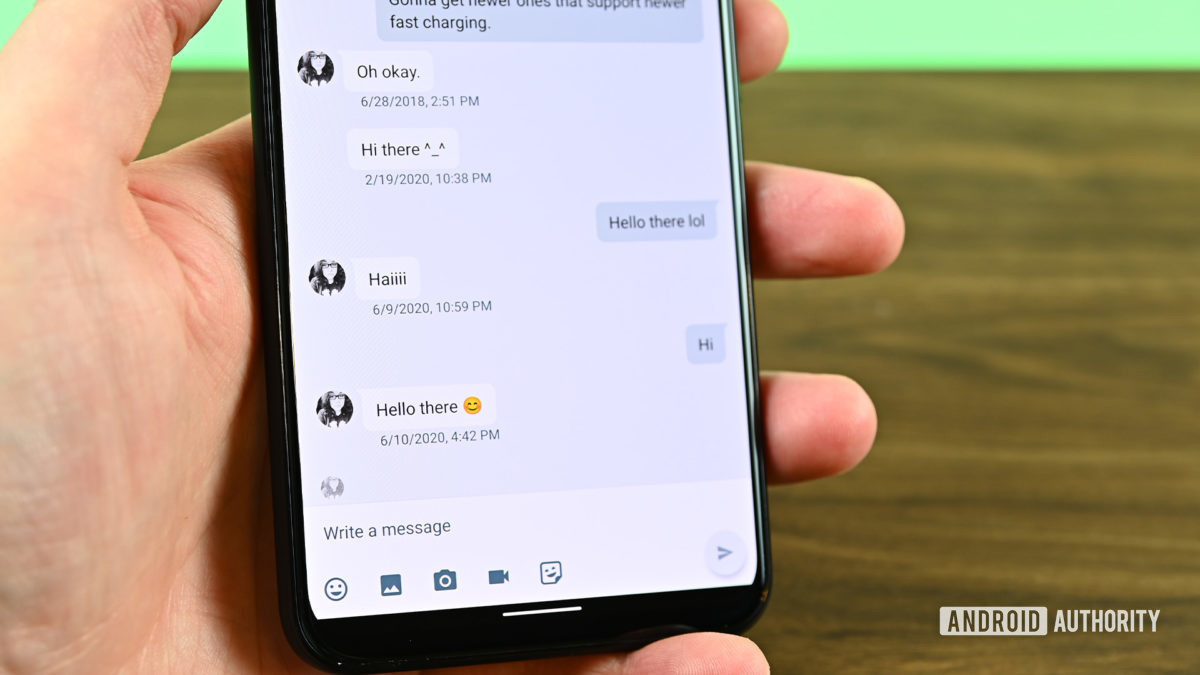
Unfortunately, the end of 2015 and the beginning of 2016 is when things started to unravel. The end of the year saw whispers of a new, bot-heavy chat service in the mix, while other whispers talked about removing SMS support in favor of Google’s new SMS app (and the first eventual successor to Google Hangouts). The former would one day become Google Allo and the latter was in support of Google’s new SMS app that would eventually become Messages by Google, Google’s RCS, SMS, and MMS app.
2016 was the beginning of Google’s war against its own chat services. We just didn’t know it yet.
The beginning of 2016 showed confidence from Google for Hangouts. The app received some major updates in the first half of the year and was among the first chat apps to support Android Nougat’s new Quick Reply feature. This is where things start to change for Hangouts. In May 2016, Google launched Google Allo, the second successor to Hangouts that was directly integrated with Google Assistant. Google swore up and down that Hangouts wasn’t going anywhere. Three months later, they announced that Hangouts would transition to a business chat service.
From there, one Hangouts update separated SMS from Hangouts chats in July. Google also decided that Hangouts would no longer come pre-installed on Android phones in October. Google added Google Duo, the third Hangouts successor, to its library in August 2016. The company also announced that Hangouts-On-Air would be swallowed up by YouTube.
Spinning out of control: 2017-2019
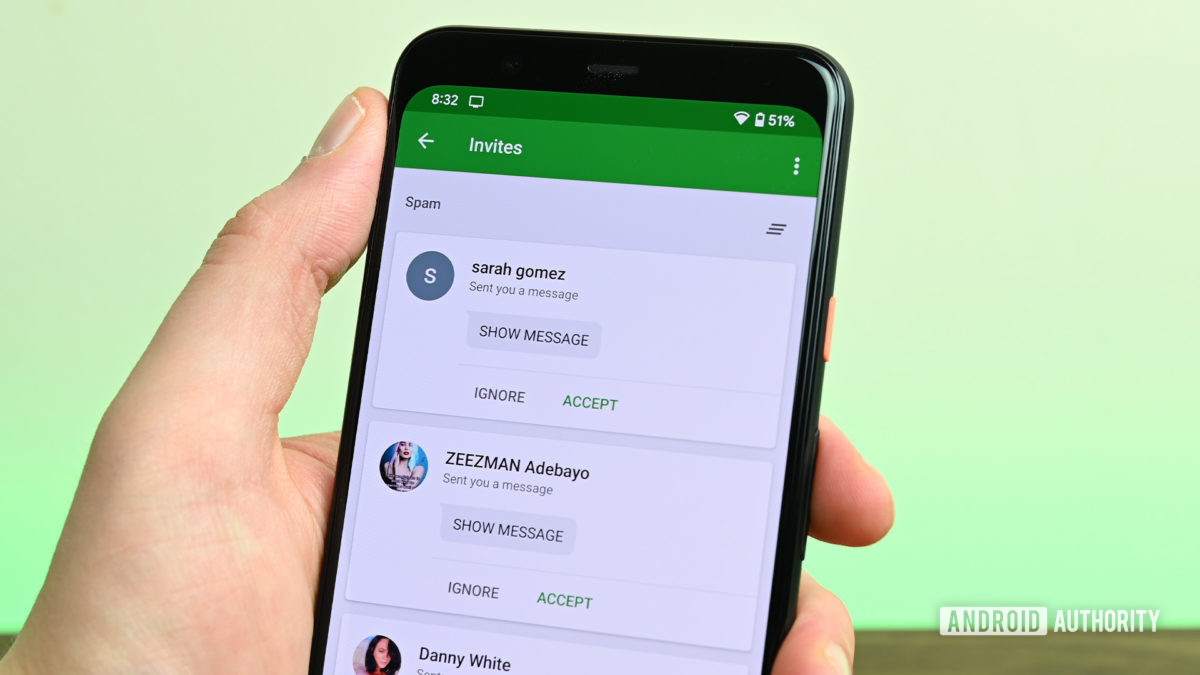
The beginning of 2017 saw Google dividing its attention even further with the launch of the fourth and fifth Hangouts successor, Google Meet and Hangouts Chat. It would be the fifth and sixth messaging apps Google launched in four years. Google officially removed SMS support in May 2017 and never looked back. Google did try to tell everyone that Hangouts wasn’t going anywhere (again), but if you read the linked article, what Google actually said was that Hangouts wasn’t going anywhere people actually wanted Hangouts to go.
Read next: How to use Google Meet
Whispers of an eventual shutdown and migration started in 2018, even if Google Hangouts lead Scott Johnston called it shoddy reporting at the time. At the end of 2018, Google announced that Allo, the big, innovative Hangouts replacement, would shut down in early 2019. The company also launched Hangouts Chat after a lengthy beta period.
In roughly five years, Google launched six total chat apps. They were Hangouts and then five direct successors to Hangouts.
It turns out that the shoddily reported rumors were, once again, true as Google officially rolled out a timeline for its eventual retirement of Google Hangouts in 2019. It also officially shut down Allo, Hangouts’ second replacement. This was the most tumultuous time in Google’s history with its chat apps. Even Huawei called Allo malware by mistake shortly before its demise. Nothing was going right. For a company on the brink of becoming just the third trillion-dollar company in history, it was a minor, but embarrassing disaster.
The end of the story: 2020-2021

In 2020, the COVID-19 pandemic caused a massive upheaval in the work environment. Google Meet played a minor role in the work communication category but was largely outdone by Zoom in terms of popularity. Around this time, Google did what it should’ve done years prior and put all of its communication products under a single roof. Late in 2020, Google finally formally announced the fate of Google Hangouts. Hangouts would shut down sometime in 2021.
See also: Zoom vs Hangouts —Which is best for your needs?
And now here we are in 2021. Google sent out a message to Hangouts users in August that they need to transition to the sixth and final Hangouts successor, Google Chat, which is actually the fourth successor (Hangouts Chat from 2017) re-branded into yet another product. This is where the story ends for now. We will update the article when the final shutdown occurs.
What Google Hangouts did right
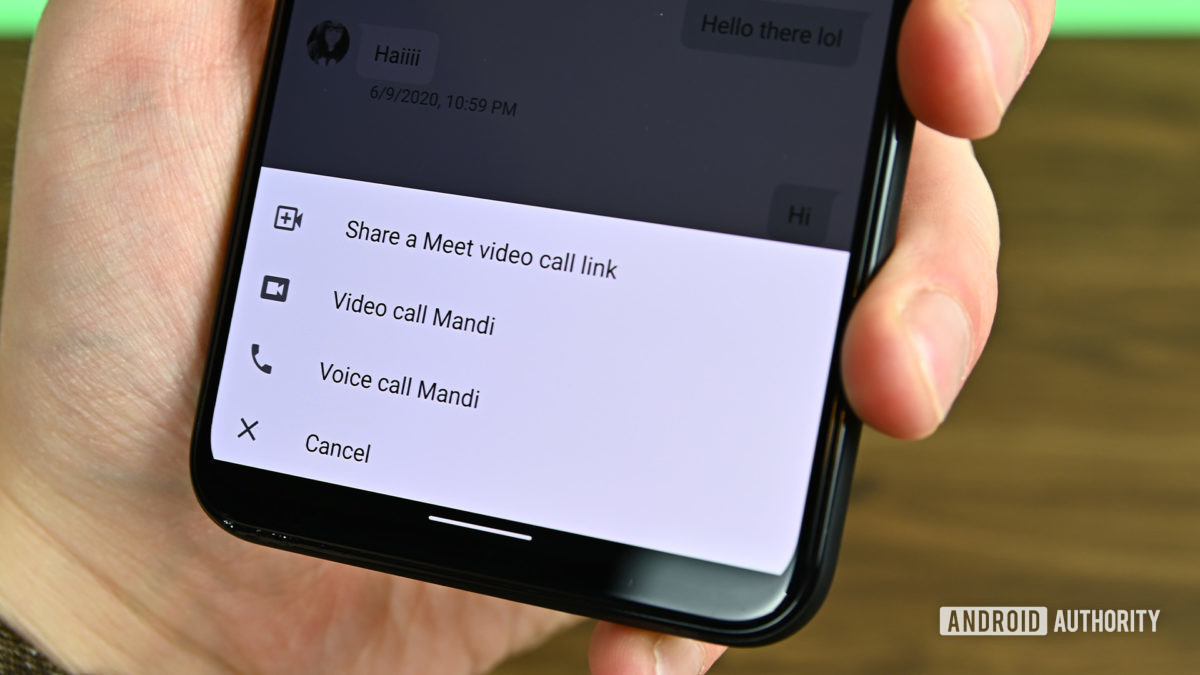
Google Hangouts did a lot of things right. It launched in an era when messaging apps were just starting to find themselves. On paper, the product did a lot correctly. Let’s go over some of the best parts of Hangouts.
- Cross-platform support: Hangouts had some of the best cross-platform support of any messaging app. Most messaging apps have caught up, but this was a pretty big deal when Hangouts first launched. It was on Android, iOS, and any desktop or laptop computer with a web browser, regardless of the operating system.
- Strong integration with Google: You could access Hangouts in Gmail and Google Plus. Being able to message people and have your email on the same webpage made it a great productivity tool. Having it in the same spot as your social media made it an excellent communication tool.
- Strong features: Google Hangouts could do it all — text chat, SMS, MMS, video chat, and voice calls. You could do all of those things in group chats as well. For its time, this was an incredibly strong set of features that few other messaging platforms could emulate.
- It kept up with current tech: While Google was actively trying, Hangouts was always among the first to integrate new Android features, like Android Nougat’s Quick Reply feature or messaging with Google Assistant (called Google Now at the time).
- Everybody had it: Google Hangouts accounts were attached to your Google account. Since almost everybody with an Android device has a Google account, nobody really had to sign up for Hangouts. It made the process much easier because it was already there.
This doesn’t sound like much. However, back in 2013, there were few competitors capable of going toe-to-toe with Google Hangouts in terms of baseline features. In addition to the list above, Hangouts was just really easy to use. Chats were laid out in a neat, orderly way. Most of the menus were easy to understand. The conversation list rarely felt cluttered or unmanageable. It was so easy my mom could use it.
Google Hangouts having a solid feature set and being the first to new Android features often put it ahead of competitors.
In short, Hangouts did a great job of hitting the comfort zone of millions of people. A lot of folks love Hangouts and can’t quantify it with reasons that made Hangouts unique. By now, almost every messaging app can do what Hangouts did. Hangouts just did it more comfortably than most.
What Google Hangouts did wrong
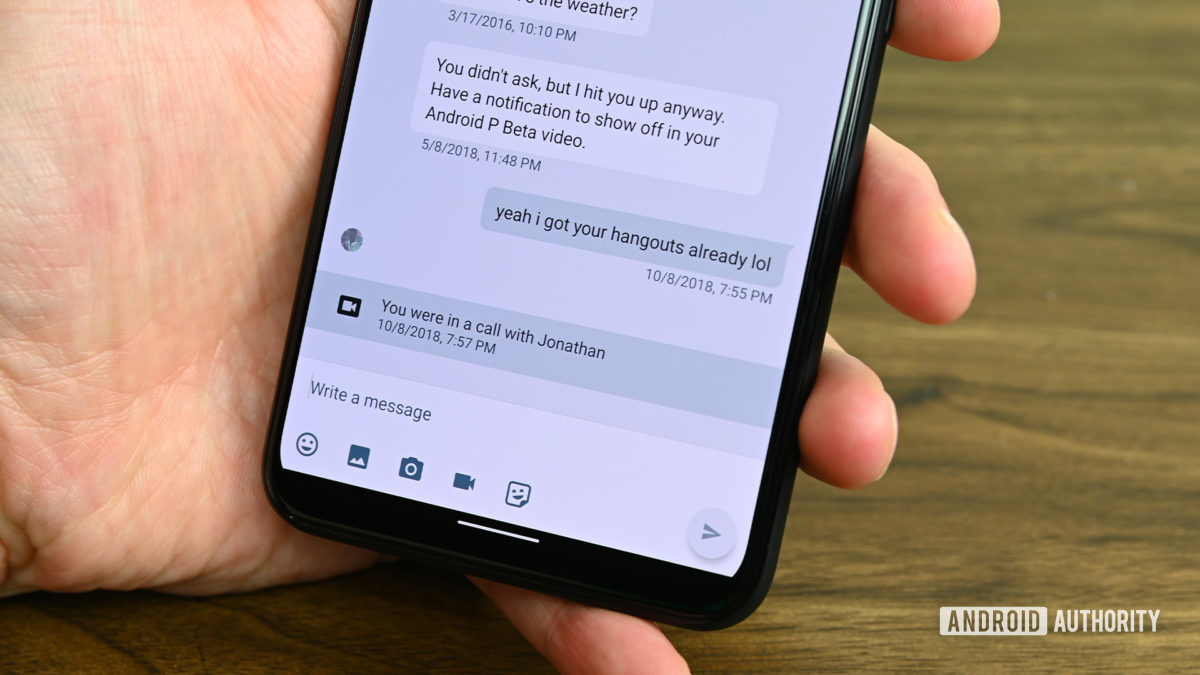
Of course, if everything was sunshine and rainbows, this article wouldn’t exist. So here’s how I think Google messed up with Hangouts. You can add your own reasons in the comments if you like.
- Google gave up after only two years: This is probably the biggest issue. The app launched in 2013 and was Google’s flagship chat app. By the end of 2016, Google had started its messaging identity crisis and had three other chat apps (Messages, Allo, and Duo). That number doesn’t include the retired Google Talk. Hangouts received updates for a while afterward, but it was never the center of attention after 2015.
- Competitors caught up: The charm of Hangouts was its strong set of base features. Well, unfortunately for Google, the concept of a group video chat isn’t unique, so eventually the big dogs caught up to Hangouts. Hangouts didn’t do much to push the envelope forward after that, allowing competitors to overtake Hangouts with features like true end-to-end encryption, self-destructing messages, and others.
- Google’s identity crisis confused everybody: By the time Hangouts retired, Google had released six other messaging apps, and that doesn’t include platform-specific ones like YouTube Messenger, Google Maps Messages, or integrated chats in Google Photos, Google Docs, etc. It’s honestly difficult to keep track of. There was only a small amount of time where Hangouts had the spotlight. It otherwise competed for attention with something else Google was doing.
- Google didn’t market to consumers: Hangouts was never the thing to use in the mainstream. Google could’ve made it more consumer-friendly with stickers, themes, filters, and other fun little extras. As far as I’m aware, it only had a dark theme and a light theme to go along with its classic green layout. The company never marketed the app to a wide audience. The company just shoved the app on Android phones by default and rarely said a word about it again.
- Other miscellaneous criticisms: Hangouts wasn’t above reproach. It faced plenty of criticism for nagging bugs that wouldn’t go away, a lack of proper encryption, and some even criticized it for abandoning XMPP, preventing it from being used on multi-chat apps like Pidgin. Its integration with Google Plus forced people to use real names for a while, limiting privacy. These minor issues plagued Hangouts throughout its lifetime.
Humans practice hagiography fairly consistently. We tend to want to remember the good times and dismiss the bad ones. A lot of people feel the same way about Hangouts. It was the best chat service Google ever made. However, I can distinctly remember whole days where I searched for a Hangouts alternative because the bugs were that frustrating. It wasn’t always smooth sailing with Google Hangouts.
Google Hangouts: The legacy
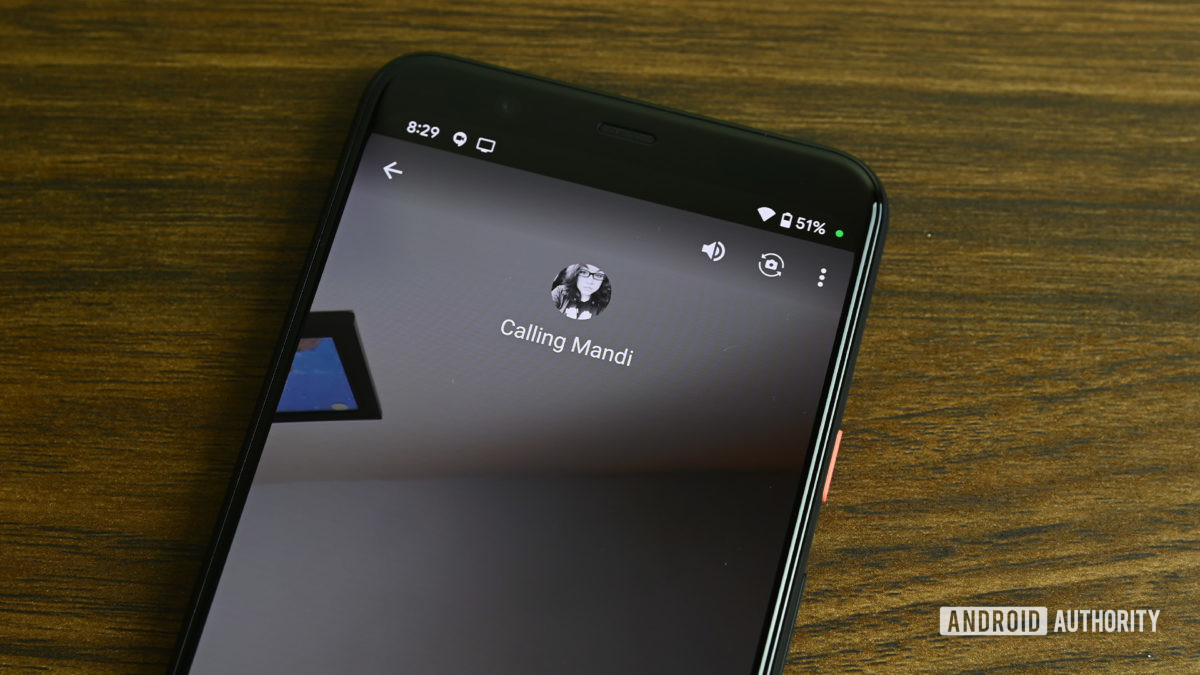
Google Hangouts isn’t with us anymore as a physical product. A lot of its features are still with us in other products. Hangouts pushed the boundaries in an era where boundaries needed to be pushed. The impact of Google Hangouts wasn’t too huge. There are, after all, a lot of messaging services that left a mark on the messaging ecosystem. Discord, for instance, revived the dead chat room scene. Signal Private Messenger and Telegram’s rivalry helped raise awareness for the benefits of encryption.
Hangouts, by contrast, affected the industry in a different way. When it launched, it launched with text, voice, and video chat. It also featured group versions of all of those chats and excellent cross-platform support. It was a rare feature set when the app launched back in 2013. Since then, most services have improved and adapted. Facebook Messenger added individual and group video chatting in 2015. WhatsApp followed along in 2018. Speaking of WhatsApp, the company added a website version in 2015. Viber added video calls in 2014, while Telegram added the feature in 2021, and Discord followed suit in 2017.
Also read: The best alternatives to FaceTime on Android
Google Hangouts was simply ahead of its time when it came to what a messaging app should include natively. Hangouts is going down, but if we’re being honest, almost every other messaging service is capable of the same stuff these days. There are plenty of decent replacements now. That wasn’t true in 2013.
Google Hangouts was a rock-solid product with a lot of innovative features for its time. However, much like Google Plus, it felt more like a home for us tech enthusiasts than a mainstream product. It certainly moved the needle. However, it didn’t move the needle enough to convince people to leave their other chat apps. The chat app will live on in our memories, even if Google forgot about it years ago.